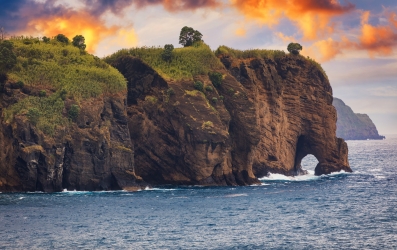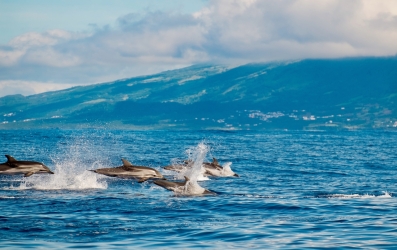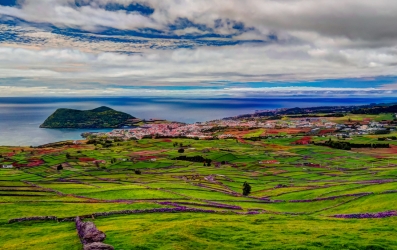"The Azores summer season brings us wonderfully sunny weather and warm temperatures this week"... one way or another, we like to hear the weather report. However, the Azores, the patron saint of such a high-pressure area, have much more to offer than good weather for Central Europe.
In the middle of the northern Atlantic Ocean, far from the European and North American mainland – lies the fascinating island world of the Azores, which were discovered and settled by the Portuguese between 1427 and 1452. The archipelago of volcanic origin is located about 1,500km west of Lisbon and is made up of the main island of Sao Miguel and eight other islands:
- Santa Maria and Formigas (together with São Miguel they are the "Eastern Group")
- Faial, Pico, São Jorge, Graciosa, Terceira ("Central Group")
- Corvo und Flores ("Western Group")
General
Thanks to their location, the islands have unique climatic conditions that provide a home for many tropical but also endemic plant and animal species. For this reason, many areas of the islands are also protected by nature. Thanks to the natural richness and wonderful landscapes - which reach a wonderful green - the Azores are perfect for outdoor activities. Guests can enjoy the surroundings on hikes or walks, and enjoy breathtaking views on Mount Pico, for example. The archipelago is also interesting for bird watching, boat trips or geo-tours, about volcanic activities and lava formations. In addition, the waters around the Azores are a perfect place for whale and dolphin watching. It is possible to discover more than 30 different species in the blue waters around the archipelago.
Climate
As you can see, the islands offer a wide variety of outdoor activities. Thanks to the mild climate, you can visit the archipelago almost all year round, but the precipitation is relatively high. The minimum average temperature is 13.6°C, the maximum average temperature is 22.2°C. Let yourself be enchanted by breathtaking and surprising scenery with a backdrop of mountains, the sea, and picturesque places!
Characteristics of the nine islands
Since each of these islands has its own peculiarities, we have listed the main features of each island.
Corvo
Corvo is the smallest inhabited island of the Azores and with its volcanic crater Caldeiro and the Lagoa do Caldeiro a popular day trip from the neighboring island of Flores.
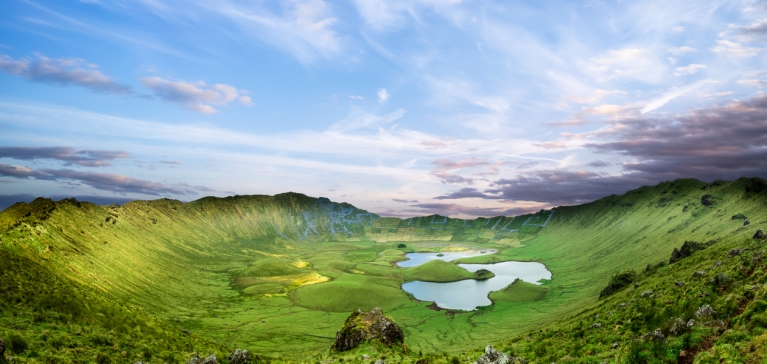
Corvo’s fascinating aerial view, Azores
Flores
Flores is the westernmost European island and also known as the flower island, as it (almost) greens and blooms at all corners all year round. The island's volcanic craters are home to seven lakes and thanks to the endemic laurel forest, the island is a paradise for nature lovers.

Azores landscape with waterfalls and cliffs on the island of Flores
Faial
With the port town of Horta, Faial is an important point of contact for sailors crossing the Atlantic. But also for non-sailors there are beautiful bathing bays and impressive volcanic craters to explore.
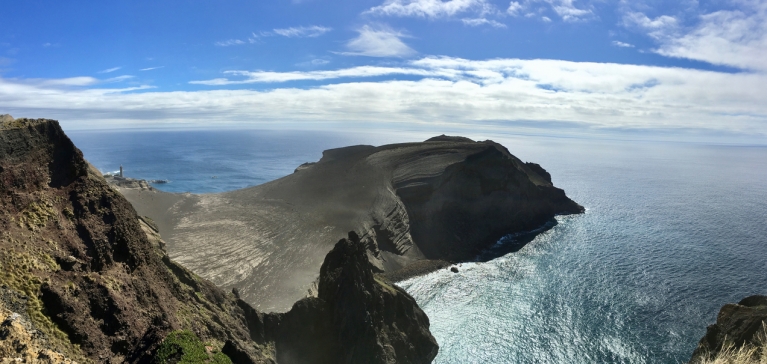
Landscape view of Faial Island, Azores
Pico
On the island of Pico, with the volcano of the same name, is the highest mountain in Portugal (2351m). In addition, Pico, once "island of whalers", is particularly well suited for whale and dolphin watching excursions. In 2004, Pico's wine-growing culture was declared a UNESCO World Heritage Site.

Pico Mountain on the Azores Island, Portugal
São Jorge
There are some remote villages on São Jorge island, some of which can only be reached on difficult paths lined with waterfalls and cliffs.

The Peninsula of Faja dos Cubres on the north side of the island of São Jorge, Azores, Portugal
Graciosa
The landmarks of Graciosa are the 19th-century windmills decorated with red roofs. The otherwise rather flat island is dominated by a volcanic crater in the southeast.
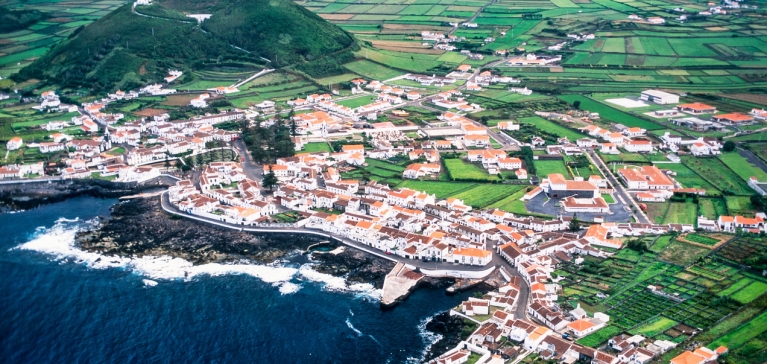
Graciosa Island in the Azores
Terceira
Terceira is a UNESCO World Heritage Site, as well as the village of Angra do Heroísmo. The city has been a part of this since 1983 thanks to its Renaissance buildings with palaces, churches, and bourgeois houses.

Basalt tunnel ceiling in the volcanic cave at Algar do Carvão, Terceira Island, Azores
Santa Maria
Santa Maria was discovered by Diogo de Silves in 1427, making it the first of the Azores islands to be discovered by the Portuguese.
Since the island has a lot of hours of sunshine and beautiful bright sandy beaches, it is particularly suitable for a beach holiday.
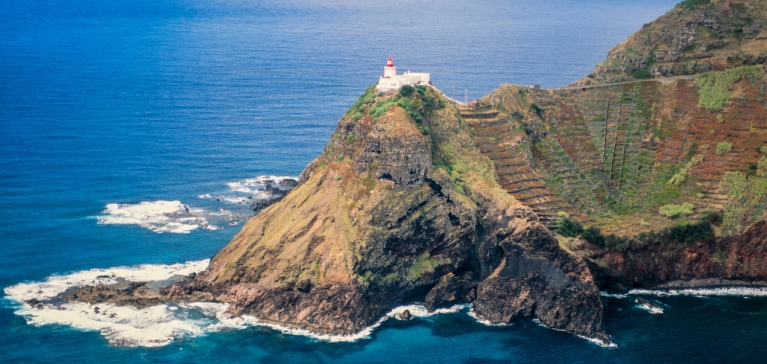
Santa Maria, Azores, Portugal
Formigas
The Formigas are eight uninhabited islets designated as a maritime nature reserve.
São Miguel
The capital of the archipelago is São Miguel, the capital of Ponta Delgada.
It not only serves as a particularly good starting point for visiting other islands, but also has a lot to offer. Especially the volcanic crater Caldeira das Sete Cidades with its two lakes is particularly worth seeing. Also popular are the tea plantations in the northeast of the island as well as the village of Furnas, where you can bathe in hot springs and streams. There is also a special gastronomic specialty, namely the cozido das furnas, a kind of stew with meat and vegetables, which is dug into the ground, with the help of geothermal energy, it is cooked on point.

A way to the Boca do Inferno viewpoint on the island of Sao Miguel, Azores
If you want to discover the diversity of the archipelago yourself, then travel Portugal to the Azores with a round trip! Take a look at our 7 day Azores trip or get your non-binding and free offer.
Other Articles


